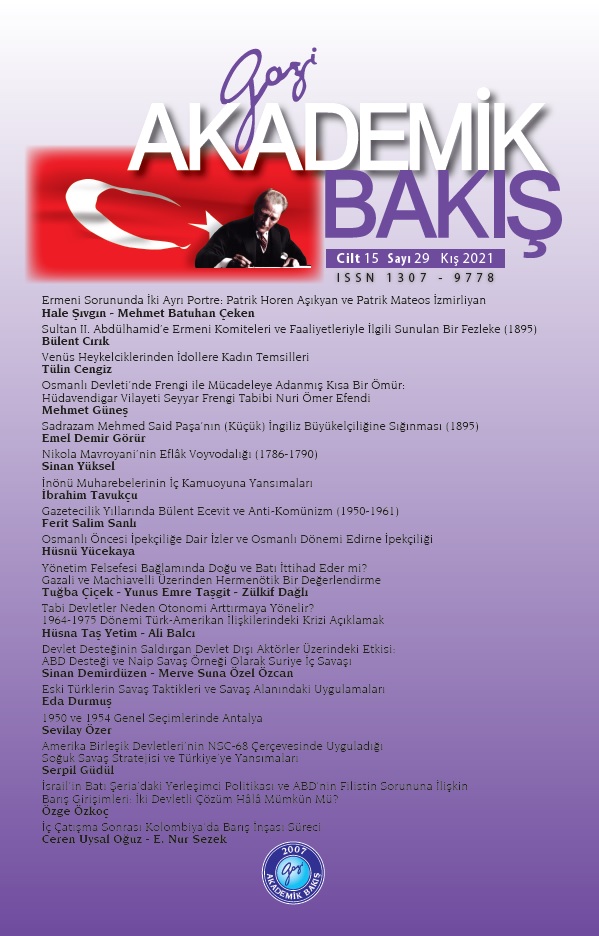Venüs Heykelciklerinden İdollere Kadın Temsilleri
Female Representations from Venus Figurines to Idols
Author(s): Tülin CENGİZSubject(s): Cultural history, Visual Arts, Ancient World
Published by: Gazi Akademik Bakış
Keywords: Woman; Female representations; Venus figurines; Mother Goddess; Matriarchal system; Patriarchal system;
Summary/Abstract: When we trace back to the past on the issue of women, the earliest evidence that archaeology encountered are the Venus figurines from the Upper Paleolithic Period. These artifacts, which have been discovered in a wide area from Europe to Siberian context, are generally depictions of women with exaggerated female organs. The most famous one of them is the Willendorf Venus that was made of limestone. There are also samples of Venus figurines with hair and facial details, as well as the ones which generally do not have any hair and facial details. The existence of these figurines raised the question of why the interest of prehistoric people focused so much on certain points of the female or female body. There is no consensus on the social, economic or cultural functions of these artifacts among the researchers, so different suggestions have been offered up to the present day. The figurines are associated with femininity, motherhood, fertility, fruitfulness, survival, rebirth, magic and shamanism, as well as a simple toy or sign object. Female figurines were engraved on clay, bone, stone and marble not only in the Paleolithic period, but also throughout the entire Mining ages. The fact that these figurines were treated in the same category as a single type, without considering the cultural / economic / ecological diversity, has been one of the factors that make it difficult to understand the historical roles of women and the process of change imposed upon them. Another factor is the lack of philological evidence to support archaeological ones in Anatolia, especially until the Bronze Age. The cuneiform tablets discovered by archaeological studies in Anatolia in the Bronze Age, a period that its history could be traced in writing, were able to provide more detailed information on the place and importance of women in political, social and economic life, compared to previous periods.
Journal: Gazi Akademik Bakış
- Issue Year: 15/2021
- Issue No: 29
- Page Range: 39-48
- Page Count: 10
- Language: Turkish

